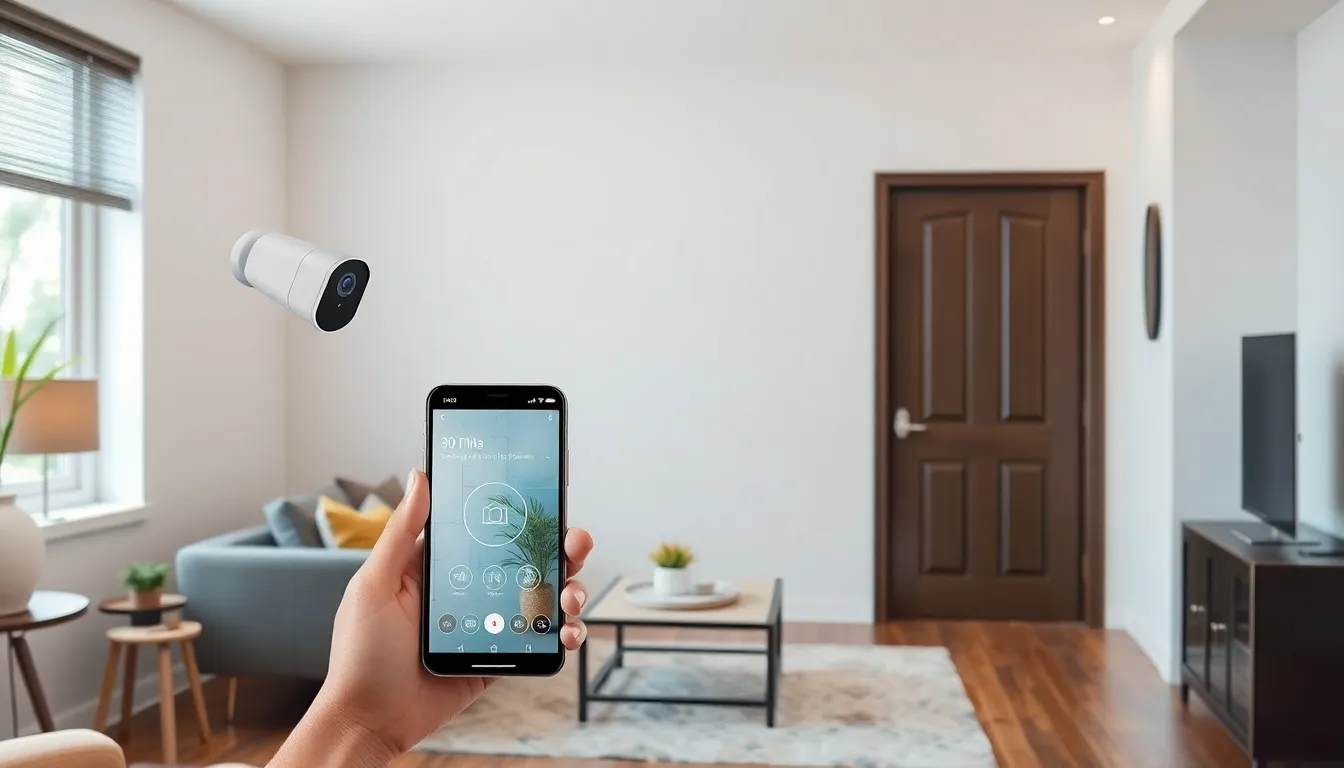Table of Contents
ToggleIn an era where technology seamlessly integrates into daily life, automated home security systems are transforming the way homeowners protect their properties. These advanced systems offer peace of mind by combining convenience with cutting-edge technology, allowing users to monitor their homes from anywhere in the world.
Gone are the days of traditional locks and alarms. Today’s automated solutions include smart cameras, motion sensors, and smart locks that work together to create a comprehensive security network. With real-time alerts and remote access, homeowners can stay connected and in control, ensuring their safety and that of their loved ones. As crime rates fluctuate and awareness of home safety grows, automated security systems have become a vital investment for modern living.
Overview of Automated Home Security
Automated home security systems offer a sophisticated approach to safeguarding properties. These systems integrate various technologies, including smart cameras, motion sensors, and smart locks, to provide a seamless security experience. Homeowners benefit from enhanced monitoring capabilities, receiving real-time alerts on suspicious activities through mobile devices.
Smart cameras use high-definition video and night vision features for effective surveillance. Motion sensors detect movement in designated areas, triggering immediate notifications. Smart locks allow remote access management, enabling homeowners to grant entry to trusted individuals without being physically present.
The interconnected nature of these devices creates a comprehensive security network. Automation streamlines home security, allowing users to set schedules, secure properties remotely, and access recorded footage from anywhere.
Investing in automated home security not only enhances safety but also contributes to overall peace of mind in an environment increasingly aware of safety concerns.
Benefits of Automated Home Security

Automated home security offers numerous advantages that significantly enhance property safety and user experience. The integration of smart technology provides homeowners with efficient tools for monitoring and protecting their homes.
Convenience and Accessibility
Automated home security systems allow remote monitoring from smartphones or tablets. Homeowners check live feeds from smart cameras anytime, anywhere, ensuring they remain connected to their properties. Smart locks provide keyless entry, enabling users to grant access to visitors without physical keys. Notifications from motion sensors prompt immediate awareness of any unusual activities, enhancing response times. Automation also enables scheduling security modes, offering ease of use tailored to daily routines.
Enhanced Safety Features
Automated systems incorporate advanced safety features that strengthen property protection. High-definition smart cameras deliver clear footage for effective surveillance, while night vision capabilities allow monitoring in low-light conditions. Motion sensors instantly alert homeowners when movement is detected, acting as a deterrent against intruders. Integration with home alarm systems adds another layer of protection, triggering loud sirens if unauthorized entry occurs. Many systems also allow for integration with emergency services, ensuring immediate assistance if needed.
Types of Automated Home Security Systems
Automated home security systems come in various types, each serving distinct purposes to enhance property protection.
Smart Cameras and Surveillance
Smart cameras serve as the backbone of automated home security. They provide high-definition video footage, often with features like night vision and two-way audio. These cameras capture activity 24/7 and can store footage both locally and in the cloud for easy access. Many models offer motion detection, sending real-time alerts to homeowners’ devices when movement is detected. Integration with mobile apps allows users to view live feeds and receive notifications from anywhere, enhancing situational awareness. Advanced options include pan-and-tilt capabilities, enabling users to adjust the camera’s view remotely.
Alarm Systems and Sensors
Alarm systems consist of various components, including door and window sensors, glass break detectors, and motion sensors. Door and window sensors alert homeowners when entry points are compromised. Glass break detectors identify the sound of shattered glass and trigger alerts. Motion sensors use infrared technology to detect movement, providing coverage in key areas of the home. Many alarm systems enable integration with smart home devices, ensuring seamless communication among components. Homeowners can customize settings and receive immediate notifications through mobile apps, increasing response efficiency in case of potential threats.
Choosing the Right Automated Home Security System
Selecting an automated home security system requires careful consideration of various factors to ensure optimal protection. Understanding installation options and essential features aids homeowners in making informed decisions.
Factors to Consider
- Budget: Determine the overall costs, including equipment, installation, and ongoing monitoring fees. Prices for automated systems can range from $200 to $2,500 depending on features.
- Features: Evaluate essential features such as video surveillance, alarm systems, motion detection, and remote access. High-definition video, night vision, and two-way audio enhance effectiveness.
- System Compatibility: Ensure the system integrates with existing smart home devices like smart lights, thermostats, or voice assistants. Interoperability increases overall functionality.
- Customer Support: Assess the level of customer support, including warranty options and service availability. Reliable support provides peace of mind during emergencies.
- Monitoring Options: Choose between DIY monitoring or professional monitoring services. Professional services range from $10 to $60 monthly, offering 24/7 coverage.
- User Experience: Consider the ease of use, including mobile app functionality and device management. Intuitive interfaces enhance user experience.
Installation Options
- Self-Installation: Allows users to set up their systems independently, often providing flexibility and savings on installation fees. User-friendly systems typically include comprehensive guides.
- Professional Installation: Offers expert setup for more complex systems, ensuring optimal placement of devices. Costs for professional installation range from $100 to $500 depending on system complexity.
- Hybrid Installation: Combines DIY elements with professional assistance for specific components. This option provides a balanced approach, allowing homeowners to customize their setup.
- Wireless vs. Wired: Evaluate the choice between wireless systems, which offer easy installation and flexibility, and wired systems, which provide reliability and better connectivity. Wireless systems typically involve lower installation costs.
- Future Scalability: Consider systems that allow for easy upgrades or expansions, ensuring adaptability as security needs evolve. Modular systems provide flexibility for adding new components.
Choosing the right automated home security system involves thorough evaluation of features, costs, and installation methods. Making informed decisions enhances overall safety and peace of mind.
Automated home security systems represent a significant advancement in protecting properties. By integrating smart technology homeowners gain unparalleled convenience and control over their safety. The ability to monitor homes in real-time and manage access remotely empowers individuals to respond quickly to potential threats.
Investing in these systems not only enhances security but also contributes to peace of mind in an unpredictable world. With various options available homeowners can tailor their security solutions to meet specific needs. Embracing automated home security is a proactive step toward ensuring a safer living environment.


